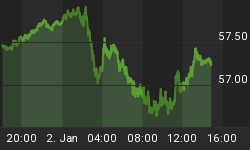
As they add another log, this time from the Norwegian central bank (the 65th in six months), to the global easing fire now sweeping the globe, it should come as no surprise that the U.S dollar is the largest benefactor of these equilibrating monetary pressures. Less we forget, Chairman Bernanke was the first to reach for the fire hose way back in the dog days of summer in 2007. And although his beard was darker and his monetary mettle untested at the time - he basically went on to write the playbook that our European counterparts have been running their slowdown defenses from.
And while the equity markets have reacted to easing in a similar fashion, namely they go up every session - gold and silver have exhibited the inverse dynamic to when the FED opened the spigot in 2007. Why?


While bull market runs, such as the one found in silver and gold, inevitably come under the influence of various motivators during their reign, I believe the secular shifts in the euro and the U.S. dollar has become it's primary influence today. In 2007, when Bernanke started to ease and introduce extraordinary liquidity measures, the dollar broke down and gold and silver broke out. Today the inverse is true, with the ECB taking the easing and liquidity baton from the FED. These relationships are even more lucid today, considering many correlations have broken down over the past few months in the face of the equity markets exuberance.
With that said, and with the VIX printing briefly below 14 yesterday, it is very likely that the exuberance and discounting window is closing across various markets. History shows us that strange things happen when no one fights the __________(insert favorite central banker here).
















